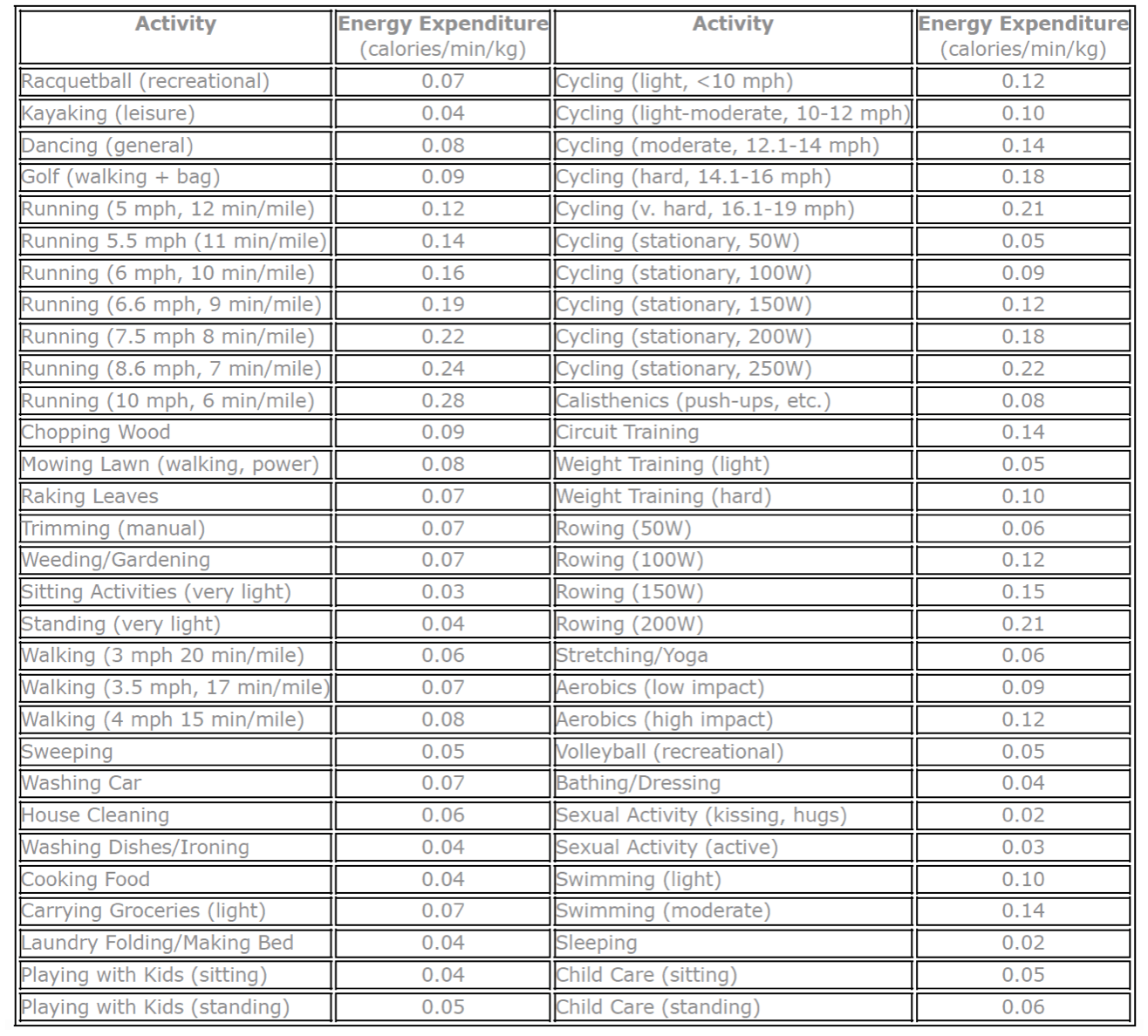
YOUR FITNESS BLOG
A Scientific, Proven Way to Weight Loss & Dieting Part 2
In part 1 of evidence-based weight loss, we discussed the metabolic adaptations with dieting that function to restore energy balance and resist weight lost. It was identified that all components of total daily energy expenditure (TDEE) undergo adaptive changes that function to reduce the energy deficit [8, 9]. In dieting, the body reduces the calories burned when eating, at rest, and most notably during spontaneous activity, which attenuate further losses in fat mass. This article will focus on strategies that can help overcome weight loss plateaus to achieve further weight loss.
Decreasing Energy Intake
The goal in weight loss, whether people acknowledge this or not, is to reduce fat mass while retaining lean muscle. The retention of lean muscle is not only critical for achieving a toned and defined physique, but for many important bodily functions. Lean muscle plays critical roles in maintaining strength for performance (i.e. gym workouts, sport) as well as for activities of daily living. Also, lean muscle has a central function in protein metabolism [10]. It serves as the primary reservoir for amino acids to maintain protein synthesis in vital organs and tissues like the heart, skin, brain, and liver that are essential for survival [10]. Likewise, lean muscle has a great role in the prevention of many chronic diseases. Diseases such as heart disease, obesity and cancer have all been associated with losses of lean muscle [10].
The assumption with dieters is that reductions in body weight are the result of loses of 100% fat mass. Although this may be true if dieting is performed correctly, the likelihood is much greater that both lean muscle and connective tissue are being lost as well. As muscle is more dense than fat (1.1 g/mL versus 0.9 g/mL), it weighs more [5]. Therefore, a combined loss of fat mass and muscle tissue could lead to a greater than expected loss in body weight.
Additionally, muscle and fat yield different energy amounts when broken down. One pound of pure body fat generates about 3,500 kcals when metabolised, whereas muscle requires 600 kcal to be broken down for energy [2]. It is common strategy for personal trainers to set client caloric reductions of 500 kcal per day to achieve one pound of fat loss per week. However, the danger is that the same 3,500 calorie reduction can result in significant body weight changes depending on the amount of muscle tissue lost.
From the chart below, the same caloric deficit of 500 calories per day (3,500 kcal/week) could results in even greater body weight loss reductions per week, but at the expense of valuable muscle loss.

Smart Dieting for Continuous Weight Loss
To understand how to accomplish continuous weight loss, it is important to reintroduce the energy balance equation: Energy intake – Energy Output = Energy Stored in Body [3]. This equation states that if energy intake from food is greater than energy expelled from TDEE, weight gain occurs [8]. Conversely, energy expenditure that exceeds intake results in weight loss [8]. Given this, there are three strategies to re-establish weight loss in the presence of weight plateauing [1].
- Decrease energy intake from food
- Increase energy expenditure within TDEE
- Apply a combination of both
Decreasing Energy Intake From Food
As a starting point, an individual must first understand his or her maintenance calories. Maintenance calories refers to a point where body weight is stable because energy expenditure is equivalent to energy intake.
Once maintenance calories are established, a caloric deficit is set to reduce energy intake. Setting a caloric deficit is an individual decision, however caution must be taken with larger calorie deficits. Larger energy deficits from dieting can generate more weight loss, although the risk of losing lean muscle mass becomes much greater [2]. Likewise, larger energy deficits lead to faster rates of adaptation that invariably resist further weight loss [2]. Given this, a gradual, stepwise approach to dieting is best to reduce lean muscle loses and the rate of metabolic adaptation [2].
Caloric deficits can be defined as:
- Small: 10%-15% below maintenance calories
- Moderate: 20%—25% below maintenance calories
- Large: more than 25% below maintenance calories
Example:

Small caloric reductions are generally the easiest to create [4]. They may involve simple deductions in sauces or dressings used with food or very slight reductions in portion meal sizes. Advantages to smaller caloric deficits include improved adherence and consistency as well as minimised risk of muscle loss and metabolic impact [4]. A drawback to smaller caloric deficits will be a slower rate of weight loss [4].
Moderate caloric deficits are more widely utilised for weight reduction [4]. Moderate deficits are still manageable and can be achieve with relatively few dietary alterations (i.e. reduced portion sizes, lower calorie foods). This level of caloric reduction will potentially have greater metabolic consequences, however the rate of weight loss will be quicker [4].
Large caloric reductions can yield the greatest losses in fat mass [4]. However, adherence to larger calorie deficits can be challenging and difficult to manage, particularly long-term [4]. These larger reductions have the greatest metabolic impact with larger implications on appetite hormones like leptin [4]. Large caloric deficits are best applied over the short term (2-4 weeks) before an adjustment to moderate caloric deficit is made [4].
Adjusting For Metabolic Adaptation
Metabolic adaptation to dieting will occur at varying rates and its magnitude appears to be proportional to the size of energy deficit [2]. A study by Redman and colleagues (2009) demonstrated the varying rates of metabolic adaptations in their study using male subjects averaging 24.8% bodyfat and females averaging 36.7% bodyfat [6]. The subjects were randomised to four groups for 6-months described below in Figure 1.
Figure 1

Figure 2

The results displayed above in Figure 2 show the adaptation response pre- and post-study period. The greatest adaptions occurred in the LCD group that were calorie restricted to a diet of 890 kcal/day in addition to increasing energy expenditure until the subjects reached a 15% weight reduction [6].
Knowing that an adaptive response to dieting in unavoidable, it will be the case that a portion of the initial calorie deficit created will become offset by adaptation [3]. This means that actual weight loss will be different to predicted [3]. For example, if the predicted caloric deficit is 500 kcal/day, the actual deficit may be 300 kcal/day due to adaptation. Certainly, this discrepancy will have implications on predicted weekly weight loss.
To achieve weight loss beyond metabolic adaptation, dietary adjustments will need to be applied to re-open a caloric deficit [1]. As a general guideline, Eric Helms recommends a deficit of 100 calories if the predicted weight loss is less than 0.5% per week [3]. Similarly, Lyle Macdonald states that when fat loss slows below 1 lb per week, an additional calorie reduction of approximately 10% should be applied [3]. A more detailed approach to adjusting calories to account for adaption is provide by Lyle Macdonald below [3]:

For example, take a case of a female weighing 155 lbs and holding 26% bodyfat. This individual that loses 3 lbs of fat mass (100% fat assumed), over the course of about 2 weeks would expect an adaptive drop in TDEE by 60-84 cal/day. In other words, 60-84 cal/day will be offset from the initial caloric deficit. To account for this adaptive response, the individual would need to create an additional caloric deficit of 60-84 cal per day to achieve continuous fat loss. Nutritionally, this deficit would be created by reducing food intake (i.e. reducing portion sizes or number of meals) and/or selecting lower calorie foods.
Increasing Energy Expenditure Within TDEE
Apart from creating a caloric deficit through dieting, continuous fat loss can be achieved by increasing energy expenditure [3]. If TDEE exceeds energy intake, weight loss will be achieved. It is more challenging to quantify energy expenditure, because of the various components that constitute TDEE. However, it can be simplified by focusing on the two elements that can be controlled within TDEE, that is, volitional (thermic effect of activity/exercise (TEA/TEE) ) and spontaneous activity (non-exercise activity thermogenesis (NEAT) ).
Increasing volitional activity, such as resistance training, sport or aerobic activity, first requires careful assessment of one’s current exercise plan. That is, understanding if increasing exercise levels are both available and appropriate. This decision will be influenced by a number of questions including time-sensitivity, current activity level, compliance, physical and psychological tolerance.
The chart below, adapted from McArdle and colleagues (2001), indicates the energy expenditure (cal/min/kg) for a number of activities [7]. For example a 65kg woman performing 60 minutes of light weight training would expend 195 calories (0.05 x 65kg x 60 = 195 calories) [7]. This list can be useful for estimating energy expended within certain forms of activity, however it is clearly not exhaustive and merely an estimate.
Non-volitional activity (i.e. NEAT) is even more challenging to quantify given that postural changes and fidgeting are included within NEAT. Theoretically, one could could track (i.e. pedometer) distance in steps per day, estimate pace, then calculate using estimated energy expenditure. However, this would only provide a broad estimation of steps taken per day and not account for other forms of NEAT.
A more appropriate method of assessing energy expenditure would be to gauge an estimate of TEA and NEAT, then assess over the period of 1-4 weeks whether weight changes occur. If weight plateauing or regain occurs at a given caloric deficit, energy expenditure will need to be increased.
In the occurrence of metabolic adaptation, rather than creating an additional caloric deficit from dietary alterations, energy expenditure would be increased in accordance with the adaption. Using the previous example of a female that loses 3 lbs of fat mass with an adaptive drop in TDEE of 60-84 cal/day, this individual would increase activity to expend 60-84 cal/day. This may come in the form of walking an additional 20 minutes per day to expel 78 calories (0.06 x 65kg x 20 = 78 calories).

Combining Decreased Energy Intake & Increased Energy Expenditure
The final strategy to achieve continual weight loss is utilising a combination of both decreased energy intake and increased energy output [1]. This approach can take pressure off dieting by turning to activity to assist in creating an energy deficit. To combine both approaches, an individual would select a caloric deficit (i.e. 500 kcal/day) and achieve a portion from dieting (i.e. 250 kcal/day) and the other portion from activity (i.e. 250 kacl/day from walking, resistance training).
The selected deficit from dieting and activity is entirely up to the individual. Also, activity can come from a selection of volitional activity, such as cardiovascular exercise or sport, or from non-volitional activity such as walking. Alternatively, a combination of both can be applied.
To maintain fat loss through metabolic adaptation, an energy deficit is re-opened using the above mentioned combination. For example, take an individual dieting at 2000 calories/day with an adaptive response of 200 calories/day. This person could reduce food intake to 1,900 calories/day in addition to increasing the number of steps taken/day to account for the remaining calories. This combined approach is particularly useful for those where weight loss is time-sensitive.
Summary
In an effort to achieve continuous weight loss beyond metabolic adaptation, an energy deficit must be re-opened. Three approaches to re-opening an energy deficit include reducing energy intake, increasing energy expenditure, or using a combination of both. The scientific literature provides some useful insight into rate of adaptation for a given loss in fat mass. However, adaption rates will vary between people. The size of energy deficit will depend largely on the individual and his or her tolerance, urgency and compliance. Large energy deficits created too quickly will impact strength and performance and it is best to apply a gradual energy deficit to minimise the rate of adaptation and muscle loss.
For more information on our personal training services please click here to read more.
References:
[1] Aragon, Alan. 2014. Alan Aragon Research Review (AARR): What Causes Weight Loss Plateaus, and How Can They Be Overcome? [online]. [viewed on January 17, 2017]. Available from: http://www.alanaragonblog.com/aarr/.
[2] Helms, R. H. Evidence-Based Recommendations for Natural Body Building Contest Preparation: Nutrition and Supplementation. Journal of the International Society for Sports Nutrition. May. Vol. 11, No.20, pp. 186/1550-2783.
[3] McDonald, L. 2016. Alan Aragon Research Review (AARR): How to Adjust Your Diet for Continuous Fat Loss [online]. [viewed on January 17, 2017] Available from: http://www.alanaragonblog.com/aarr/.
[4] McDonald, L. 2008. Body Recomposition: Setting the Deficit – Small, Moderate or Large [online]. [viewed on January 17, 2017]. Available from: http://www.bodyrecomposition.com/fat-loss/setting-the-deficit-small-moderate-or-large.html/.
[5] McArdle, W. D. et al. 2009. Exercise Physiology: Nutrition, Energy and Human Performance. 7th Edition. Essex: Lippincott Williams & Wilkins.
[6] Redman, L.M. at al. 2009. Metabolic and behavioral compensations in response to caloric restriction: implications for the maintenance of weight loss. PloS One. Vol. 4, No. 2, e4377.
[7] The American Council on Exercise (ACE). 2017. Calorie Cost of Physical Activity. [Viewed on February 01, 2017]. Available from: https://www.acefitness.org/updateable/update_display.aspx?pageID=593.
[8] Thomas, D.M. et al. 2014. Time to Correctly Predict the Amount of Weight Loss with Dieting. Journal of the Academy of Nutrition and Dietetics. June. Vol. 114, No. 6, pp.857-861.
[9] Trexler, E. T. 2014. Metabolic Adaptations to Weight Loss Implications for the Athlete. Journal of the International Society of Sports Nutrition. February. Vol. 11, No. 1, pp. 1186/1550-278.
[10] Wolfe, R. R. 2006. The Underappreciated Role of Muscle in Health and Disease. American Journal of Clinical Nutrition. September. Vol. 84, No. 3, pp. 475-482.

Did you find this content valuable?
Add yourself to our community to be notified of future content.

